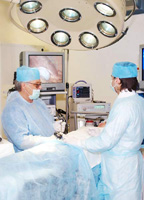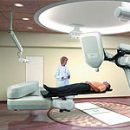What is amputation? What is the story of this procedure? How amputation is happening? What happens after amputation? What are possible complications after amputation? Answers to these questions you will find in the article.
Content
Amputation
Amputation is a surgical operation aimed at removing
limbs or its part that interferes with the normal function of healthy
limbs and, moreover, causes unknown pain and or danger
Distribution of infection. Amputation is applied as the last tool
in treatment.
Indications to amputation may be severe damage or
tumor, but most often cause amputation is peripheral disease
Arteries due to atherosclerosis. When atherosclerosis, blood flow is broken
In the tissues in view of the narrowing of the vacation lumen. this leads to
tissue cells are not sufficiently oxygen and nutritious
Substances. The strongest such deficit is manifested in the most distant
From the hearts of areas - fingers and legs. Necrosis of tissues begins precisely
from these parts of the body. At the same time, the pallor appears first,
Folding fingers. Next appears a small yazelka that quickly
Strengthens and blacks. There are necrosis fabrics. Jointing
infection worsens fabric condition. As a result, the question arises about
need amputation, since changes in tissues become
irreversible and delay with operation fraught with formidable complications.
From the history...

Amputation - one of the most ancient operations. Hippocrates conducted
amputation within the dead fabrics, later Celsius proposed her
capturing healthy fabrics, which was more appropriate, but in the middle
century all this was forgotten. In the XVI century, the pair suggested the dressing of the vessels
instead of calene iron or lowering in boiling oil, then
Louis Pet began to cover the crop of the skin, and in the XIX century the pies offered
bone-plastic surgery.
Most often, an amputation operation is carried out in vascular diseases of limbs, tumors and severe injuries.
Vascular diseases of the limbs - a leading cause
ammputations in people aged 50 years and older, and takes 90% of all
Ammputations. Typically, the treatment of complicated vascular diseases is
appointment of antibiotics, removal of infected tissues, purpose
vascular preparations (for example. anticoagulants), and operational
Treatment lies in operations such as angioplasty, shunting,
Stenting. However, when the listed events cannot help
achieve the desired result, the surgeon has to resort to amputation
as a saving measure.
In addition, vessel damage can occur and
severe (swollen, crushed) injuries, deep burns. IN
The result of this is also observed the absence of blood supply to tissues
limbs and their necrosis. If you do not remove the necrotized fabric, then this
fraught with the distribution throughout the body products of rotting and
infection.
Amputation is used in the treatment and malignant tumors, such as osteogenic sarcoma and t.D.
The main points of the amputation operation
- Disproving skin - aponeurotic flap
- Muscles dissected with a knife
- Treatment of periosteum
- Pumping
- Treatment of bone opila.
- Nerve treatment: the tip is cut down below the ligature of the razor blade
- Revision of the cult, excision of non-visual muscles (not reduced, colors of boiled meat).
- Separate dressing of arteries and veins
- Seam on muscles (except heavy ischemia, firearms, anaerobic infection)
All amputation, for no reason they are not performed, produced in four stages:
- Dissection of skin and soft tissues
- Cut bones
- Wassel processing, vascular bandage, truncation of nerves
- Wounding
What happens after amputation
Depending on the situation after amputation, the patient remains from 5 to
14 days. Seams are deleted on the 7-8th day after surgery. Appointed
Antibiotics, painkillers and preparations aimed at treatment
Atherosclerosis. After a while, the medicinal gymnastics is appointed.
Usually after amputation arises about prosthetics. Approximate deadlines
prosthetics are within 10 - 14 days, but ultimately
it depends on situation.
Possible complications after amputation
- Usually after amputation in the remote limb there are so
called phantom pain. This means that the patient begins
feel your remote limb, she begins to hurt, appears
Desire to scratch it.
- Skin necrosis in the area of cult. This is found under the condition of unsatisfactory blood supply to the tissues of the cult.
- Keloid scars. These are perverted-rude broad scars.
The occurrence of their envy is mostly not from the quality of the operating
Surgeon, and from predisposition.
- Angiotroid element - this state occurs when damaged
nerves during amputation. At the same time there are pains in the scar.









